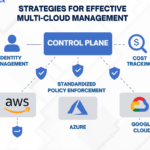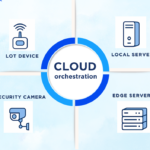Migrating legacy systems to the cloud is no small feat. These systems—often critical, complex, and deeply embedded in business operations—weren’t built with cloud-native principles in mind. But the benefits of modernization are undeniable: better scalability, improved agility, lower costs, and access to modern cloud services.
The challenge? How to modernize without breaking what’s already working. That’s where DevOps comes in.
DevOps isn’t just for greenfield projects—it’s a powerful framework for managing risk, accelerating delivery, and driving success in even the most complex legacy migrations. In this blog, we’ll explore how to apply DevOps methodologies to legacy system migrations, the challenges you might face, and proven strategies to overcome them.
Why DevOps Matters in Legacy Migrations
Legacy systems typically suffer from:
- Manual deployments and brittle release processes.
- Long development cycles and siloed teams.
- Minimal automation and poor observability.
- Difficulties in scaling or adapting to change.
DevOps offers a pathway to modernize incrementally, leveraging automation, collaboration, and continuous delivery principles to ensure smoother, safer transitions.
Common Challenges in Legacy-to-Cloud Migrations
| Challenge | Impact |
| Tight coupling between components | Hard to isolate and refactor parts of the system |
| Lack of automation | Manual deployments increase risk and slow down iterations |
| Resistance to change | Teams accustomed to old workflows may be hesitant |
| Data migration complexity | Downtime and data integrity become major concerns |
| Limited observability | Difficult to monitor and debug issues in real time |
These challenges are real—but DevOps provides the tools and mindset to navigate them with structure and confidence.
DevOps Strategies for Legacy System Migrations
1. Assess and Segment the Legacy Stack
Begin with a comprehensive application assessment to identify:
- Critical components
- Technical debt hotspots
- Opportunities for modularization
Use this assessment to create a migration blueprint—breaking down the system into manageable chunks that can be refactored or lifted incrementally.
Tip: Start with low-risk services or ancillary modules before touching core business logic.
2. Implement Infrastructure as Code (IaC)
Even if your legacy system wasn’t built for the cloud, its future infrastructure should be.
Use IaC tools like Terraform, AWS CloudFormation, or Pulumi to provision cloud resources. This ensures environments are:
- Version-controlled
- Repeatable
- Easily tested and deployed
IaC becomes the foundation for automation across environments—critical for both migration and long-term operations.
3. Containerize Where Possible
Containers offer a middle ground between lift-and-shift and full re-platforming.
- Wrap legacy components in containers using Docker.
- Run them in orchestration platforms like ECS, EKS, or Kubernetes.
- Gain portability, scalability, and simplified CI/CD integration.
Caution: Don’t containerize blindly—evaluate dependencies, state, and network configurations first.
4. Automate Testing and CI/CD
Legacy applications often lack automated test coverage, making changes risky. Introduce:
- Unit and integration tests for critical functions.
- Smoke tests for major flows.
- Canary deployments for safe rollouts.
Integrate with CI/CD pipelines (GitHub Actions, GitLab CI, Jenkins, etc.) to:
- Automate builds and deployments.
- Run tests on every commit.
- Deploy to staging or cloud environments with confidence.
Goal: Establish a delivery pipeline that can support incremental, testable deployments.
5. Monitor, Observe, and Learn
Instrument your migrated workloads from day one:
- Add logging, metrics, and tracing using tools like CloudWatch, Prometheus, and OpenTelemetry.
- Use APM tools (like Datadog, New Relic, or Dynatrace) for real-time performance insights.
Monitoring is critical not just for operations, but for validating migration success and catching regressions early.
6. Build a Feedback Loop with Agile and DevOps Teams
Migration isn’t just technical—it’s cultural. Break down silos by:
- Embedding cross-functional teams (Dev, Ops, QA, Security).
- Using Agile workflows to tackle migration in sprints.
- Holding regular retrospectives to improve the process.
DevOps culture empowers legacy modernization with shared ownership and rapid feedback.
7. Adopt a Strangler Fig Pattern
This architectural approach enables gradual migration by:
- Keeping the legacy system operational.
- Routing specific functionality through new services.
- Gradually replacing components until the legacy system is obsolete.
This reduces risk, maintains business continuity, and allows for progressive DevOps adoption.
Real-World Example: Migrating a Legacy ERP System
A manufacturing firm wanted to move its decade-old ERP system to the cloud. Key steps included:
- Assessing monolithic components and identifying opportunities for modularization.
- Containerizing services and deploying them to Amazon ECS.
- Building a CI/CD pipeline with GitLab CI for test and deployment automation.
- Using IaC to replicate production-like environments for testing.
- Applying a strangler pattern to migrate one module at a time—starting with reporting services.
Within 12 months, the team had migrated 80% of the system, improved deployment frequency from quarterly to weekly, and reduced outage risk dramatically.
Best Practices for Success
- Start with a pilot project: Prove the value of DevOps in a non-critical area before scaling.
- Document legacy behavior: Capture baseline metrics and user flows to validate parity after migration.
- Automate gradually: Don’t wait for perfect test coverage—start automating high-impact areas first.
- Keep business stakeholders in the loop: Align technical goals with business outcomes to gain buy-in.
- Embrace hybrid: During transition, legacy and modern systems will coexist—plan for integration and data consistency.
Conclusion
Modernizing legacy systems is never just about “moving to the cloud.” It’s about adopting a new way of building, delivering, and operating software—and that’s where DevOps excels.
By introducing automation, observability, modularity, and culture change, DevOps transforms legacy migrations from risky overhauls into structured, incremental journeys. The result? More resilient systems, faster delivery cycles, and greater long-term agility.



